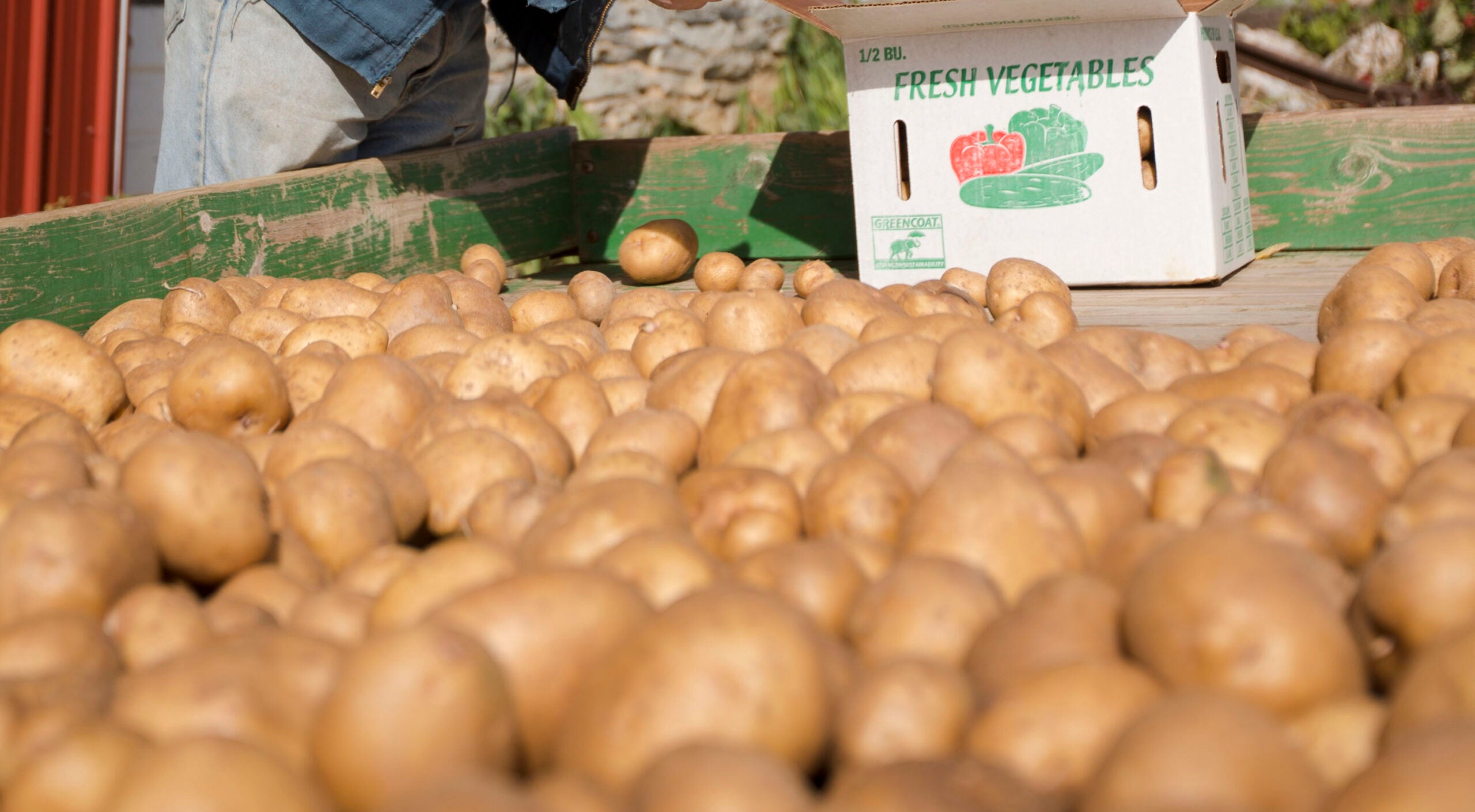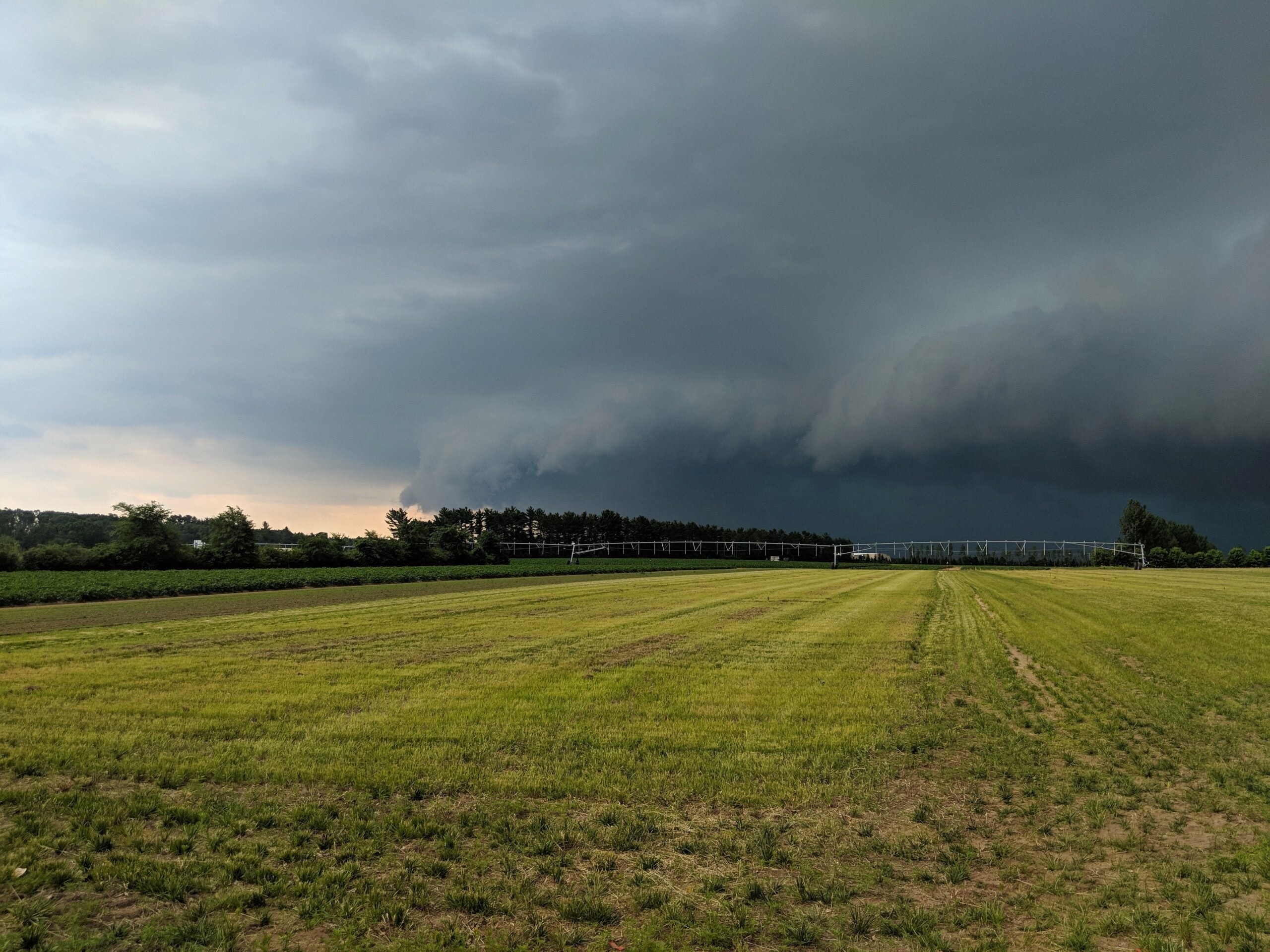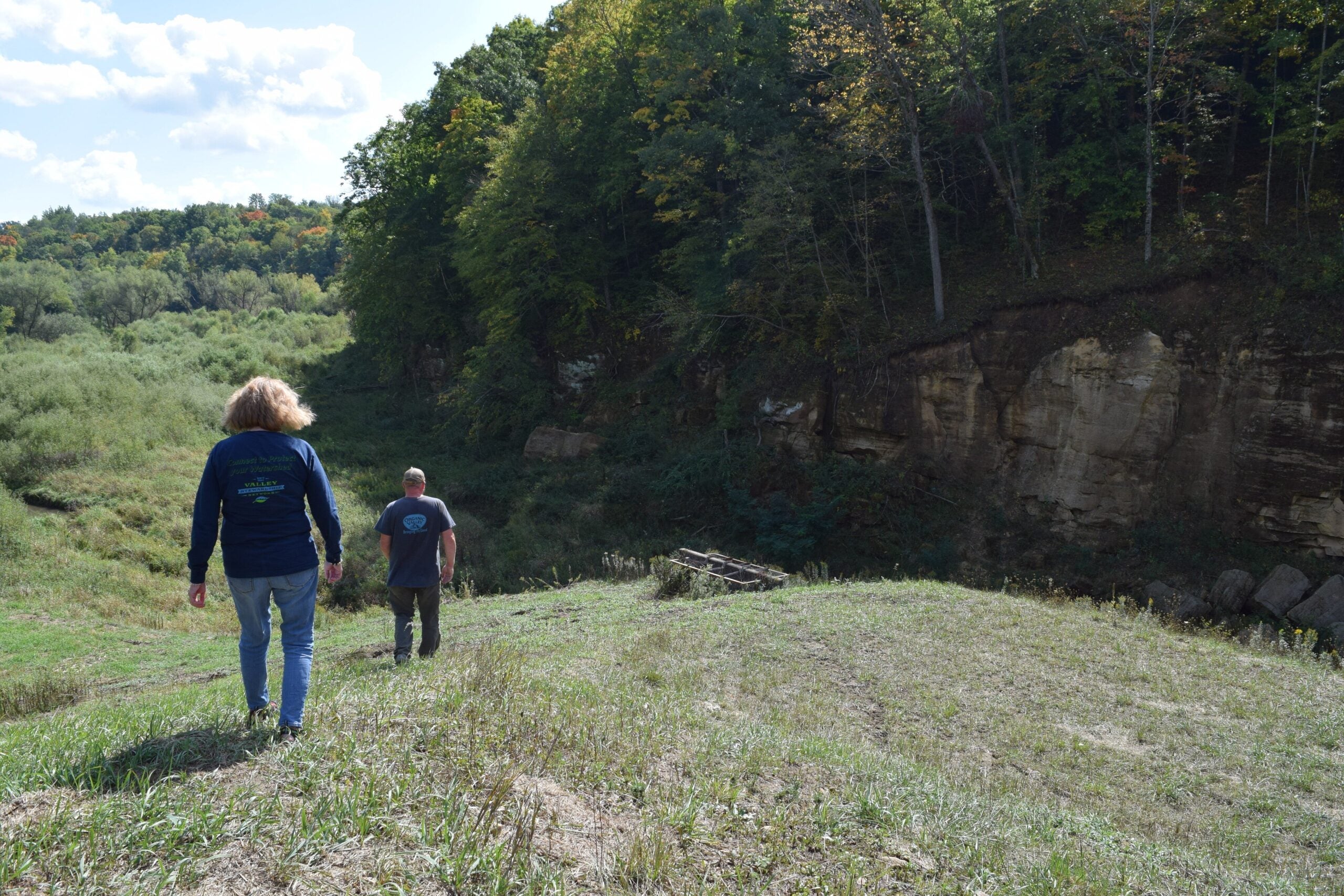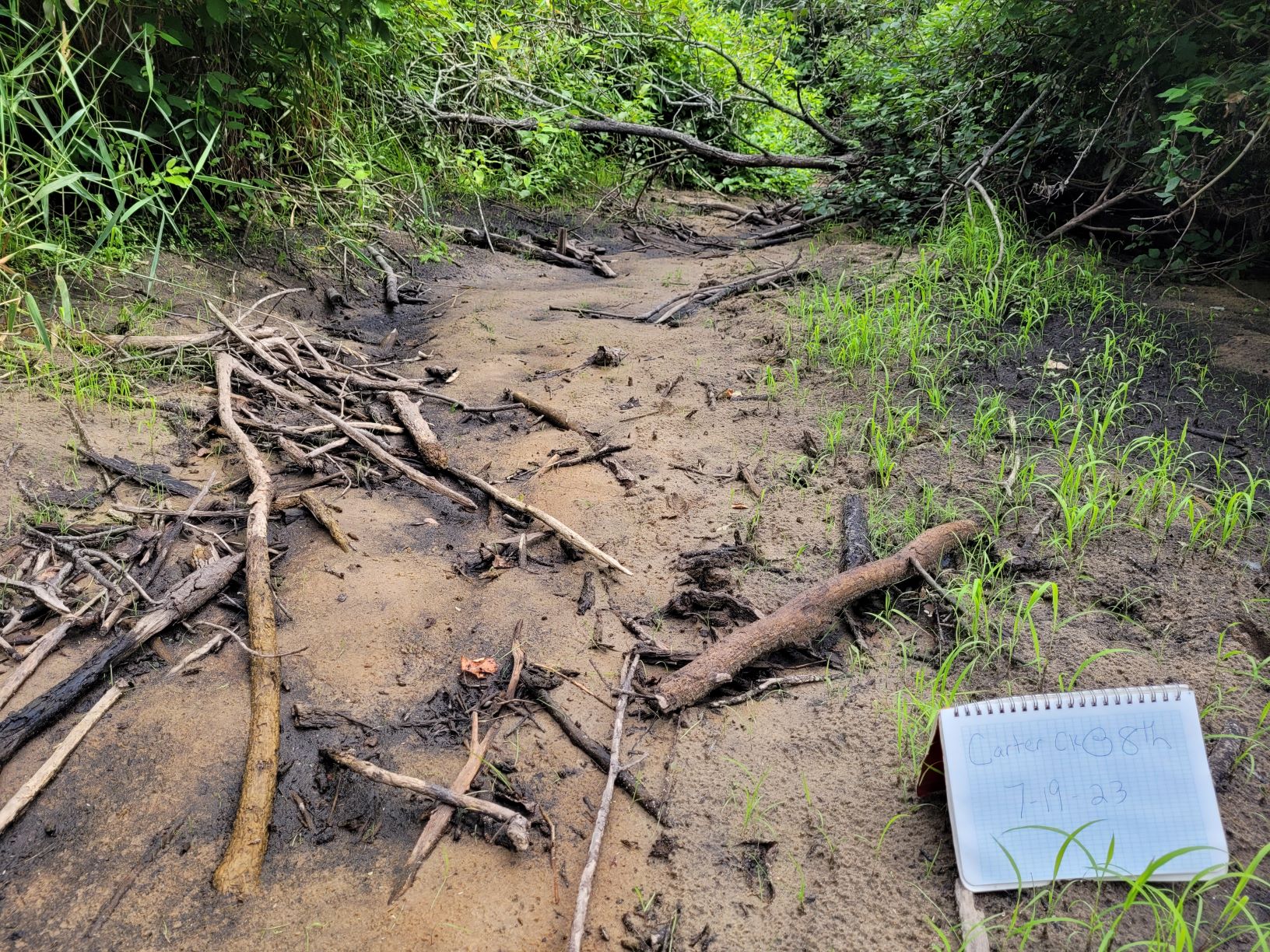The light, sandy soil of Wisconsin’s Central Sands region is well-suited for growing potatoes — a root crop that needs an ample supply of water, but is prone to rot and disease. Yet that sandy soil and potato’s high nutrient demand also exposes the region’s groundwater to nitrate contamination. Effects of climate change like increased extreme rainfalls and a longer growing season are expected to make nitrate pollution more difficult to manage. In this series, WPR is exploring how the state can adapt to and mitigate the affect climate change is having on some of Wisconsin’s most iconic foods.
Andy Diercks believes Wisconsin is among the best places in the country to grow potatoes.
Diercks’ 2,600-acre farm sits in the Central Sands region of the state, above an abundant supply of groundwater and, as its name implies, a sandy, light soil.
Stay informed on the latest news
Sign up for WPR’s email newsletter.
Wisconsin is the United States’ third-largest producer of potatoes — an often finicky crop that needs an abundance of water and nutrients and is prone to disease and quality concerns.
But what makes the Central Sands a good place to grow potatoes can also leave the region vulnerable to groundwater quality and quantity issues.
A wetter and warmer Wisconsin has further exacerbated potato farming’s greatest risk to the environment and human health: nitrogen leaking into the groundwater supply.
Farmers and experts alike know the risks of nitrogen contamination — and they also know it’s almost impossible to grow an economically competitive potato crop in the region’s soil without contributing some level of water pollution.
There are steps farmers can take to reduce these risks, but farmers and experts say consumer demands will also have to change if the goal is to grow potatoes that need less water and nitrogen.
‘Growers Hands Are Tied’
Ten years ago, conversations surrounding potatoes and the environment were about water quantity. 2012 was a dry, hot year and potatoes’ need for roughly 20 inches of water during the growing season meant a heavier reliance on irrigation that stressed the region’s lakes and rivers.
But today, the conversation’s about water quality.
Nitrogen management is a huge struggle for potato farmers, said Chris Kucharik, chair of the University of Wisconsin-Madison Agronomy Department.
It’s like taking a bath with the plug pulled — water washes through the sandy soil and potatoes’ shallow root system into the groundwater table, which can be only 10 feet below the surface in some areas.
Keeping nitrogen in the top couple of feet of soil where the roots are located is incredibly difficult, Kucharik said.

Nitrate concentration from all sources. Graph courtesy of Kevin Masarik, UW-Stevens Point groundwater specialist
“Once it goes below the root zone, it goes to the groundwater system or other surface water bodies, and it’s lost,” Kucharik said. “There’s huge amounts of nitrate leaching in those systems.”
State agencies estimate about 10 percent of Wisconsin’s private wells don’t meet the drinking water standard of 10 parts per million — in heavy agricultural areas, that can rise to as high as 20 percent of private wells.
While nitrate runoff from all forms of agriculture is also tied to increases in algal blooms in surface water and the dead zone in the Gulf of Mexico, in the Central Sands, the primary concern falls on groundwater contamination.
High levels of nitrates in drinking water are associated with serious health concerns — particularly for infants and pregnant women. Excessive nitrates can affect how blood carries oxygen and have long been linked to blue baby syndrome. Growing research also points to serious health risks for adults.
Potatoes are just one corner of the agriculture industry that contributes to nitrate contamination — the most widespread groundwater pollutant in the state. Statewide, potatoes make up a comparatively small amount of agricultural acreage, but in the Central Sands, they’re prominent.
Corn isn’t far behind in nitrogen demand, and covers much more acreage than potatoes. Manure, and to a lesser extent septic systems, are also sources.
Just how little nitrate it takes to reach the 10 parts per million water standard often surprises people, said Kevin Masarik, groundwater specialist at UW-Stevens Point. Even with best management practices, it’s often not enough to reach clean groundwater quality.
 John Nichols/WPR
John Nichols/WPR
That coupled with a higher frequency of heavy rainfall events, increased precipitation outside of summer and longer growing seasons, and all of a sudden it’s getting more difficult to keep the nitrogen in the soil, Kucharik said.
“And the worst place to store nitrogen is in soil,” he said.
Wisconsin Public Radio, © Copyright 2025, Board of Regents of the University of Wisconsin System and Wisconsin Educational Communications Board.



